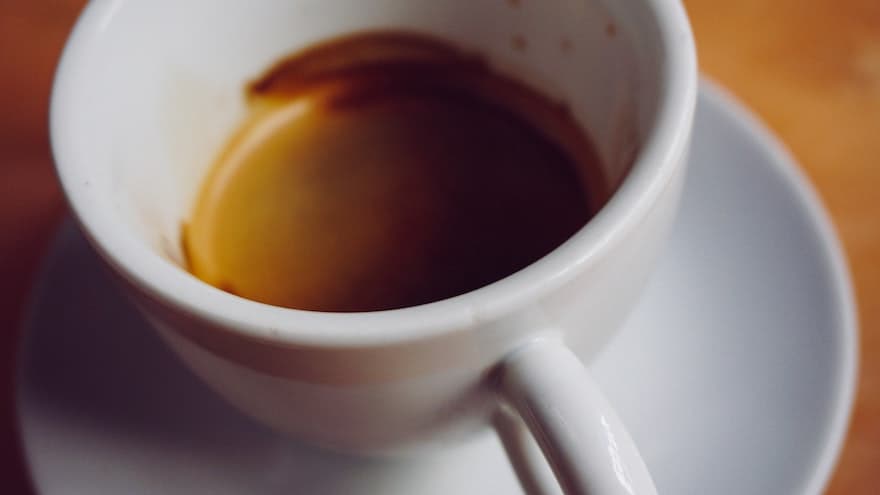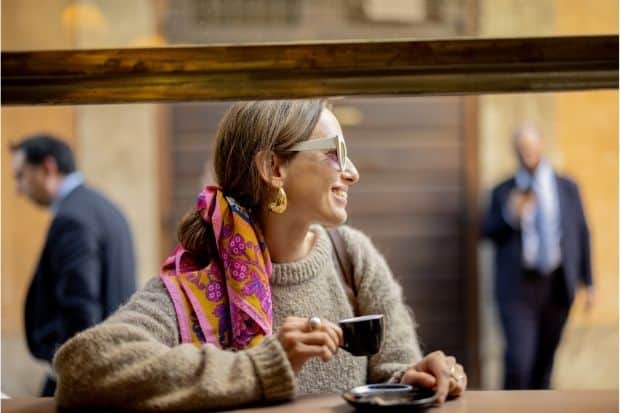Last Updated on December 9, 2023
For millions of people, the word espresso signifies little more than an extra boost of caffeine.
That’s a shame, as it is one of the purest and most flavorful coffee experiences you can have. Particularly if you find yourself in Italy, where it is part of the daily culture and they take their coffee seriously.
However, if you don’t know your way around that tiny beverage, you might find it a bitter drink and be left wondering why you paid so much for so little coffee. Knowing how to drink espresso can make all the difference.
What to know about espresso
First things first. Knowing how to pronounce “espresso” will help ensure that your order is taken seriously at the counter. There is no X in the word, so no X should be pronounced. Instead, lean into the S at the beginning and especially the pair at the end. It’s es-PRESS-o.
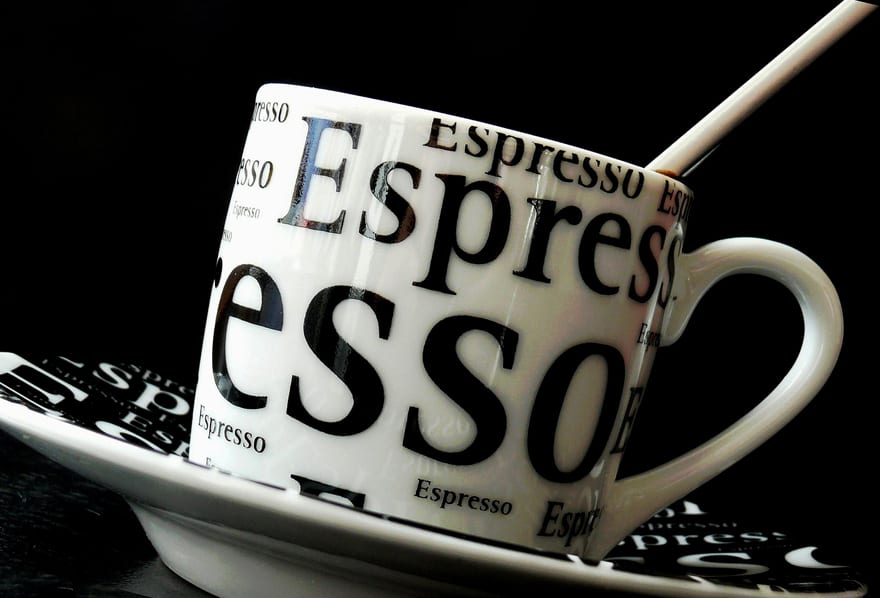
Beyond that, a little knowledge of history and engineering can help you appreciate all that goes into that tiny cup.
Espresso, the invention of an Italian who simply wanted a faster cup of coffee, is made with a machine, finely ground coffee beans, hot water, and high pressure to extract as much flavor from those beans as possible in 25 seconds. Considering that even the fastest drip coffee makers take three minutes, this is good time saving.
Espresso alone is a simple enough drink, but of course it is also the basis of many other coffee shop classics. Most notably, Americanos and cappuccinos are both, at their core, reliant on espresso for their flavor. Therefore, if you want to gauge just how good a particular coffee shop may be, trying a straight espresso first can be a worthwhile exercise.
How to drink your espresso
You should keep a few things in mind when it comes time to enjoy your espresso. These steps will help make each shot the best it can be.
Before you drink
Order it at the bar as the Italians do, and always opt for the ceramic cup if possible. This helps keep the coffee warm and more likely to be drunk at exactly the right temperature. If you prepare espresso at home, gently warm the cup with hot water first. It would be a shame if you went to great effort to pull the perfect shot, only have it lose much of its heat within seconds of being poured.
Next, inspect the crema. Every caffeinated espresso should have a crema—a thin layer of light brown foam—on the surface of the coffee.
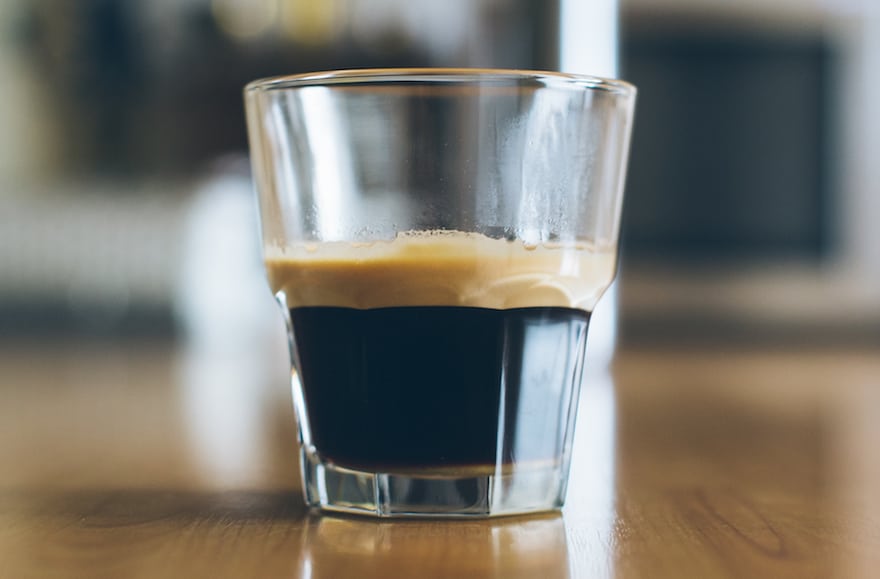
This indicates that the espresso has been made from fresh, high-quality beans, pressed at an appropriate temperature, and is still fresh. Some less-than-scrupulous baristas may attempt to serve an espresso that was pulled some time ago and then set aside. The absence of crema is the customer’s tip-off.
Lastly, drink the water that is served with the espresso. This is the custom in Italy.
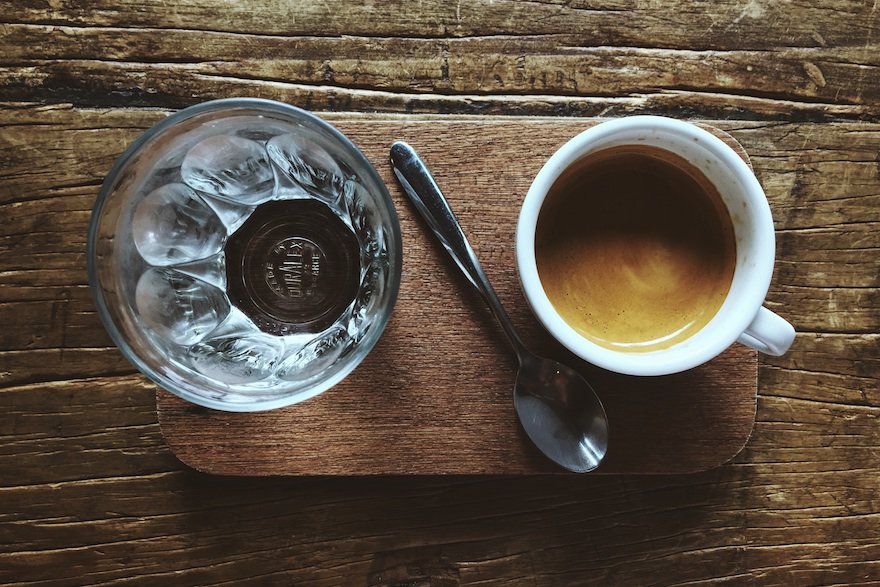
Chances are that it’s a sparkling water (or acqua minerale in Italian), which may sound a little strange. However, it is always offered in restaurants and coffee shops in Italy because its effervescence helps cleanse the palate and prime your taste buds for whatever comes next. That little shot of espresso likely costs as much as, if not more than, a cup of drip coffee, so you might as well do what you can to make sure you taste every last flavor of the drink.
Stirring espresso
Just because an espresso is made quickly does not mean that it’s ready to be enjoyed as soon as it crosses the coffee shop’s bar. Remember the crema? By this point, it has served its main purpose. Not only has it reassured you that your espresso is fresh, but it has locked in all those essential aromas and flavors that make a shot of espresso so enjoyable.
That comes at a cost, though. Espresso crema is quite bitter compared to the rest of the shot, so many aficionados simply remove it with a spoon. No one will judge you for doing this. It ensures that your drink will be enjoyable.
Likewise, a quick stir can help bring an espresso’s flavors forward. As with any liquid, the most dense layers settle toward the bottom of the cup when espresso sits. A quick stir makes sure the flavor is even all the way through, so you don’t miss some flavors in the top half and get overwhelmed by them in the bottom half.
Espresso is not for sipping
Sitting down, reading the newspaper, sipping an espresso—that’s not really a thing. You can order it at the bar, while standing, and drink it quite quickly while it’s still at optimum temperature. Divide it into two or three sips, taking in a little bit of air with each sip to help spring those flavors. Take a moment between each sip to savor the perfection. You’ll detect unique aromas and a mouthfeel that sets espresso apart from other beverages.
There’s only an ounce or so of the coffee, so it won’t take long. After you finish, get on with your day!
Espresso is far more than a way to add more caffeine to a cup of coffee. Not only does it play a central role in some of the most popular coffee drinks we know, it also inspires a daily ritual all on its own. It is one of the most classic ways to enjoy the rich flavors and aromas that high-quality coffee offers. Learning how to drink espresso just like they do in Turin or Milan will help you enjoy one of the most flavorful experiences you can have in a minute or less.

